[/caption]
NASA’s GRAIL twins – dubbed GRAIL-A & GRAIL-B – are ready to embark on America’s next science expedition to the moon in less than 1 month’s time from Cape Canaveral Air Force Station, Fla.
The twin Gravity Recovery and Interior Laboratory (GRAIL) spacecraft have been exhaustively tested, fueled for flight and mounted side-by-side on a specially designed payload adapter inside the controlled environment of a clean room at the Astrotech Space Operations facility in nearby Titusville, Fla.
The next processing step is to encapsulate the lunar probes inside their protective payload fairing. The duo are set to be shipped from Astrotech to their Cape Canaveral launch pad next week on Aug. 16, where they will be mated to an already assembled Delta II booster.
Liftoff of the GRAIL twins is slated for Sept. 8 at 8:37 a.m. EDT by a Delta II Heavy rocket from Launch Complex 17 at Cape Canaveral for a nearly four month voyage to the moon.
After entering lunar orbit, the two GRAIL spacecraft will fly in a tandam formation just 50 kilometers above the lunar surface with an average separation of 200 km during the 90 day science phase.
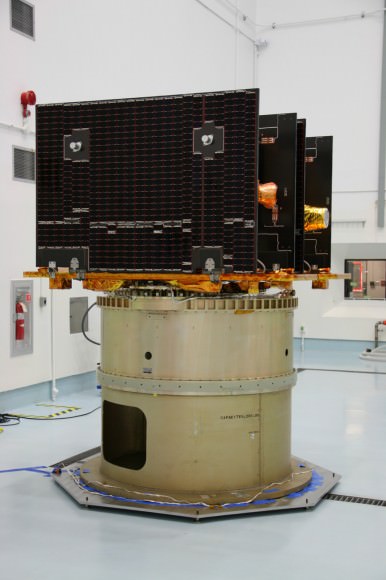
The GRAIL spacecraft are mounted to a 3 inch high Launch Vehicle Adapter Assembly and 20 inch Payload Adapter spacer ring on top of a 30-inch high GSE stand. Credit: Ken Kremer (kenkremer.com)
GRAIL’s mission goal is to map the moon’s gravity field to high precision and thereby deduce the structure of the lunar interior from crust to core. This will also lead to a better understanding of the composition of the moon’s interior, according to Sami Asmar, GRAIL co-investigator from NASA’s Jet Propulsion Laboratory in Pasasdena, Calif., during an interview inside the Astrotech clean room at a photo opportunity for the media. A gravity experiment is also aboard the just launched Jupiter bound Juno spacecraft.
GRAIL Photo Album special taken from inside the Astrotech cleanroom facility.
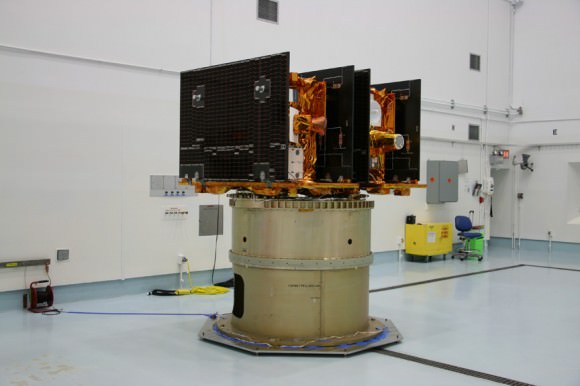
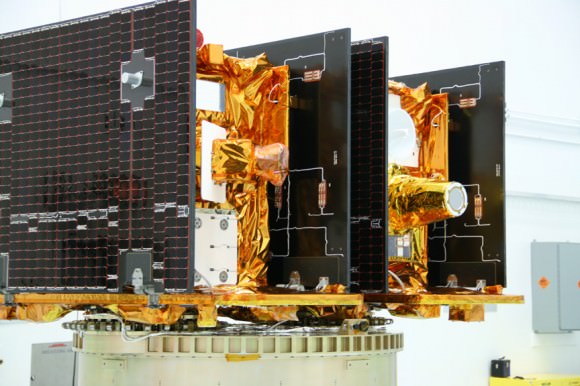
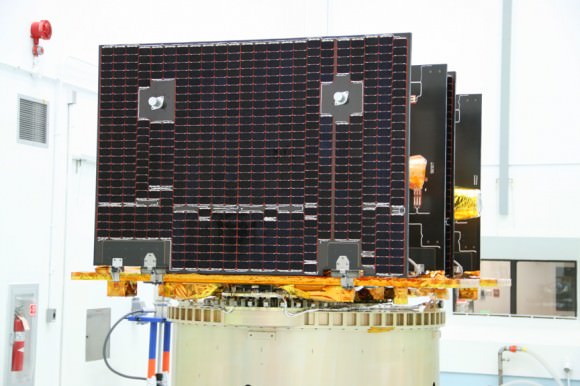
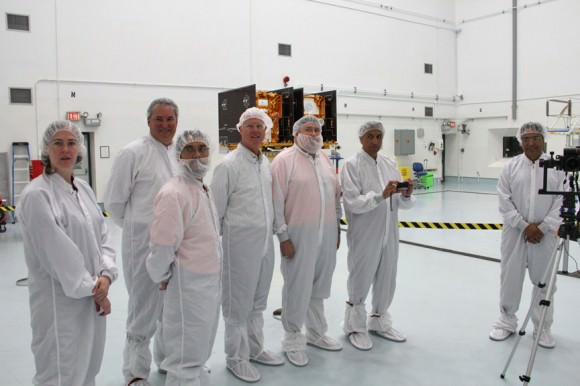
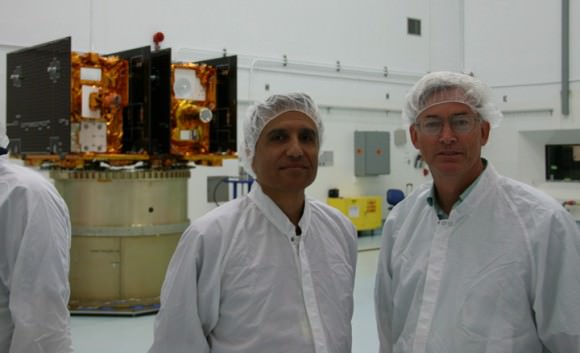

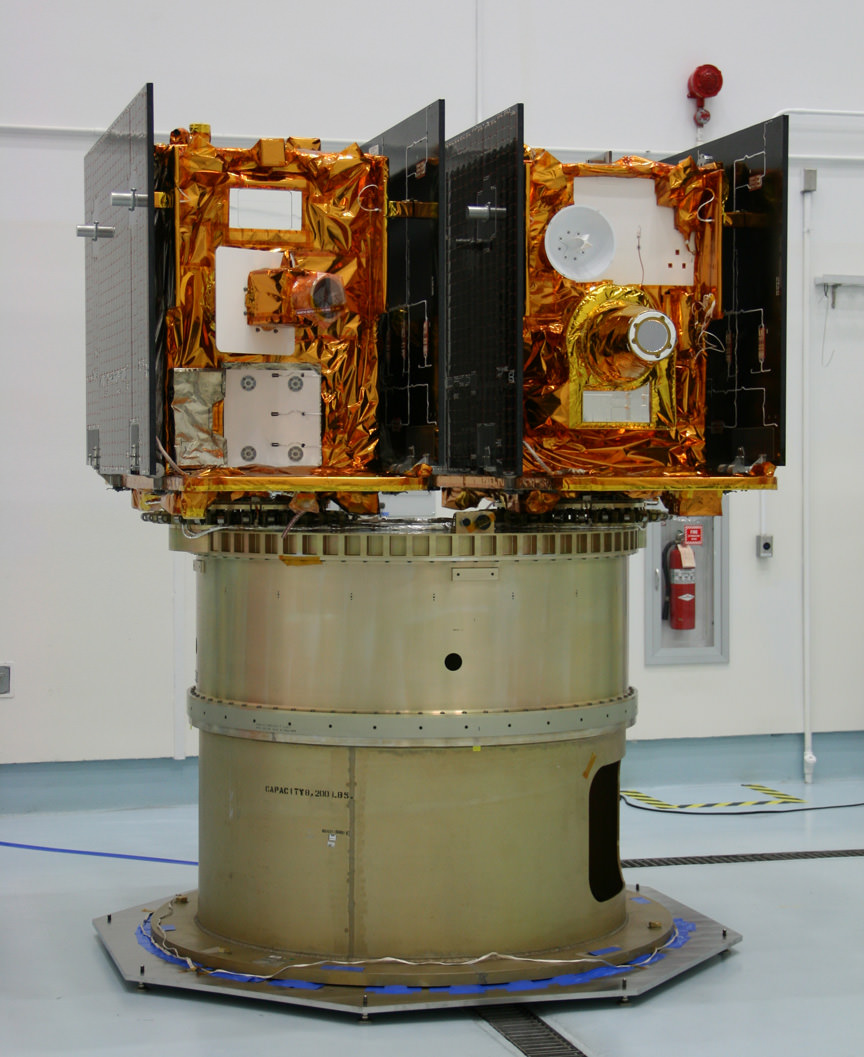
4 months to the moon? Will it spiral out from earth orbit, or something? Or have some other really interesting trajectory? How does it do this, and why? If a commercial airliner could travel though space on a direct approach it could get there in half the time. I just find it curious…
It’s just a kvetch, but I think “Gravity Recovery and Interior Laboratory (GRAIL)” is the lamest spacecraft initialism I’ve ever seen.
It’s Amazing the probes don’t look like anything, but have technology beyond imaginable.
It’s Amazing the probes don’t look like anything, but have technology beyond imaginable.
You’d think they would have come up with better twin names (excluding the obvious Castor & Pollux and naff Tweedledum and Tweedledee). Where’s the romance in GRAIL-A?
Romulus and Remus?
@Rob – They’re sending it US Postal Service, Standard Mail Non-Profit not flat-machinable. Netflix put in a bid, but we’d have to return two lunar landers first.
Seriously, http://moon.mit.edu/design.html explains it briefly. “The trans-lunar cruise phase consists of a 3.5-month low-energy transfer via the Sun-Earth Lagrange point 1 (EL1). Compared to a direct trajectory, this low-energy transfer was chosen to reduce the spacecraft fuel requirements (by ~130 m/s), to allow more time for spacecraft check-out and out-gassing, and to increase the number of days available in the launch period each month.”
@Michael Spencer – Romulus killed Remus. If the US starts developing another satellite interceptor, though, please write in those names.
DFelicious description. I’m starting to acquire a taste for the dangerous curves of heavy gravitating twin objects, such as the Earth-Moon pair.
Thanks, Tim! Excellent answer!
Both Grail and Juno are astrobiology heaven; Earth-Moon respectively planetary system formation. Ongoing Kepler and Opportunity (clays), and near term Curiosity (flows and layered clays) adds.
I can barely wait.